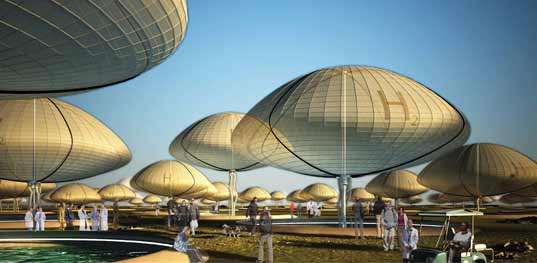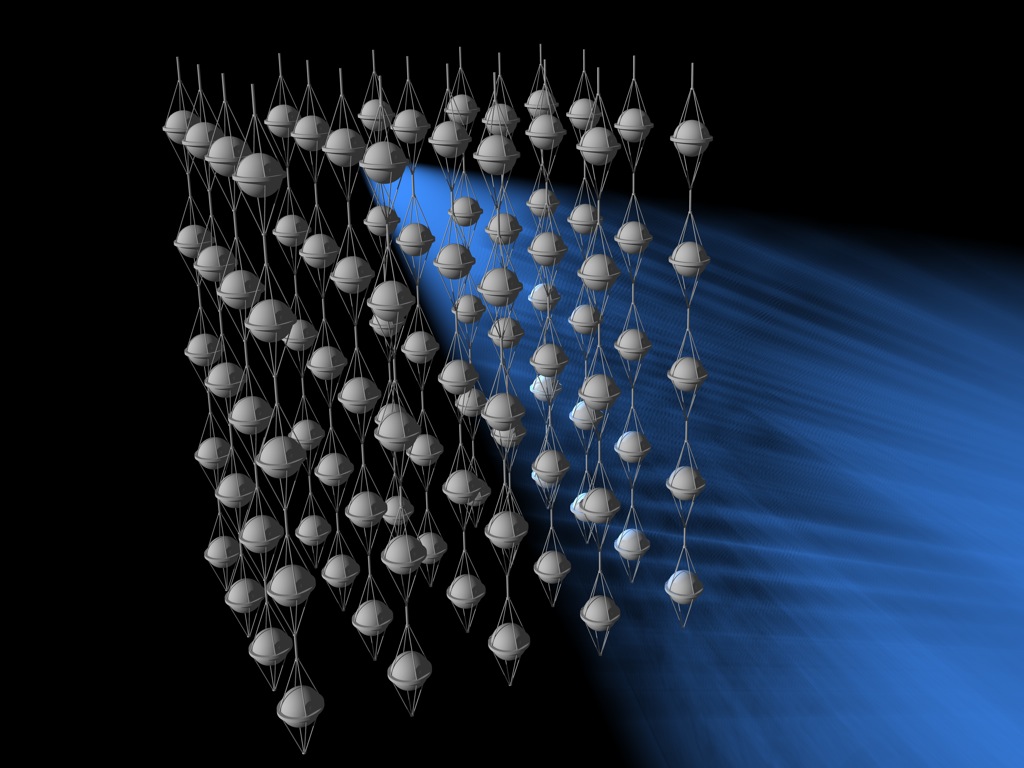Throughout the globe severe flooding displaces millions of species, causes structural and vital infrastructure damage and spreads disease from lack of sanitation. On November 15, 2007, tropical cyclone Sidr forced two and a half to three million people to flee and become homeless or fear of flooding from heavy rains, the low-lying Ganges-Brahmaputra River Delta and a 16 foot storm surge. Functional protection, clean potable water and agriculture are the first and primary necessities for continued survival during and after a catastrophic flood event. I propose a transforming system which aims to place architecture toward the future of dynamically animated and responsive structures from environmental water inputs.

Using the performative techniques of absorption from wetlands and flexibility from lily pads, the system will adapt to the environmental water changes placed upon it. The absorption qualities of wetlands will allow the system to intake water to grow and become rigid. The system’s flexibility will allow movement through the turbulent water, similar to the lily pad flexile motion through water.

One cannot stop nature, one must live in conjunction w ith nature. The goal of this proposed system is to produce an architectural prototype to aid in the relief efforts of flood victims by negotiating through turbulent waters by absorbing excess liquid to make the architectural system rigid and animated. The proposed architectural system will use the excess flood water to strengthen structural stability, harness power, provide potable water and agriculture for flood victims. This growing shelter will provide education as an institute during normal means, but function as a disaster relief shelter during turbulent times in water.
Free to be steady in continuum, but fluxing in turbulence; a modern day Noah’s Ark securing habitable sites for humans and other species. Turbulent times will have the dynamic system in tension bunched together, geometrically joined as a union to gain structural integrity. Gentle times will have the deflated system broadly arranged and geometrically relaxed. The mechanism will adapt to the set of inputs placed upon its exterior skin and feed those inputs throughout the structure as a whole.
Concentrating on the harsh and forceful side of water, flooding will occur in a natural state of turbulence, in which these aggressive structures will provide utopian disaster relief environments, rising above the landscaft for a safer and secure surroundings. The evolving structures will become increasingly rigid from the increase in force exerted upon itself infinitely. As storm waters rise, the system will increase in scale with structural integrity, appearing to levitate across the turbulent waters.














































